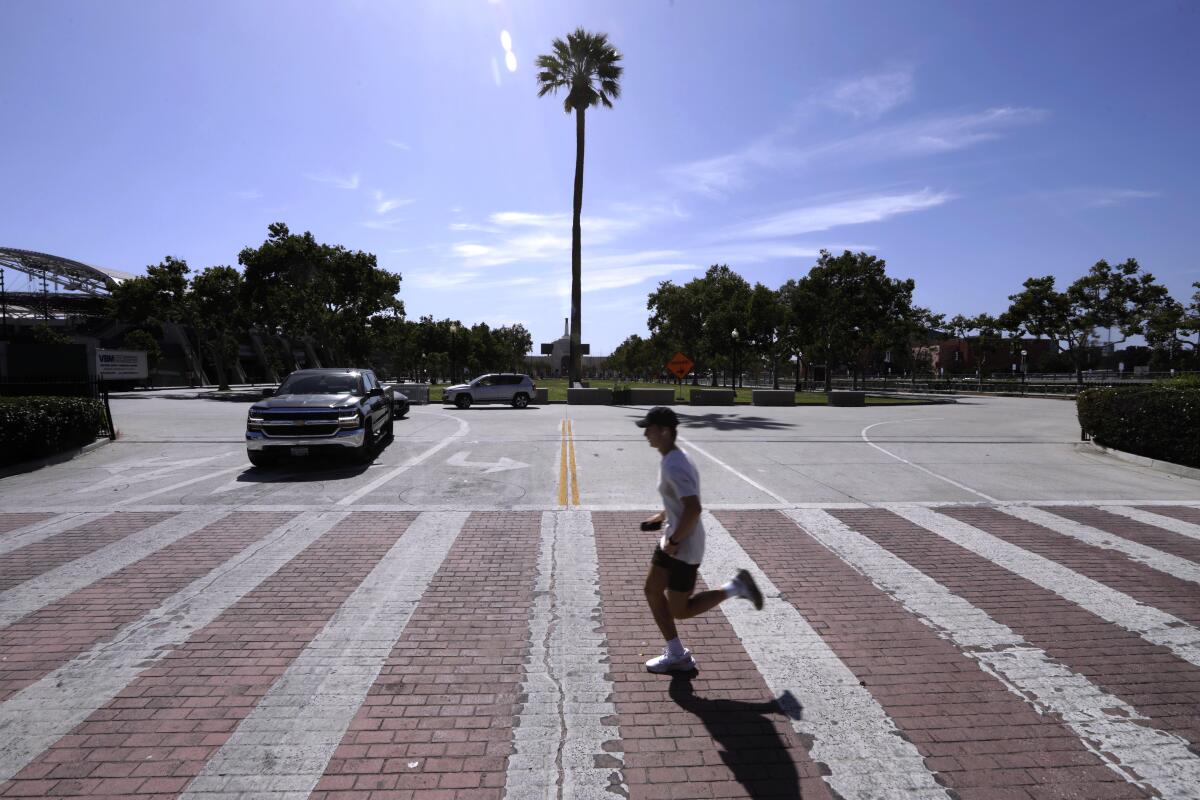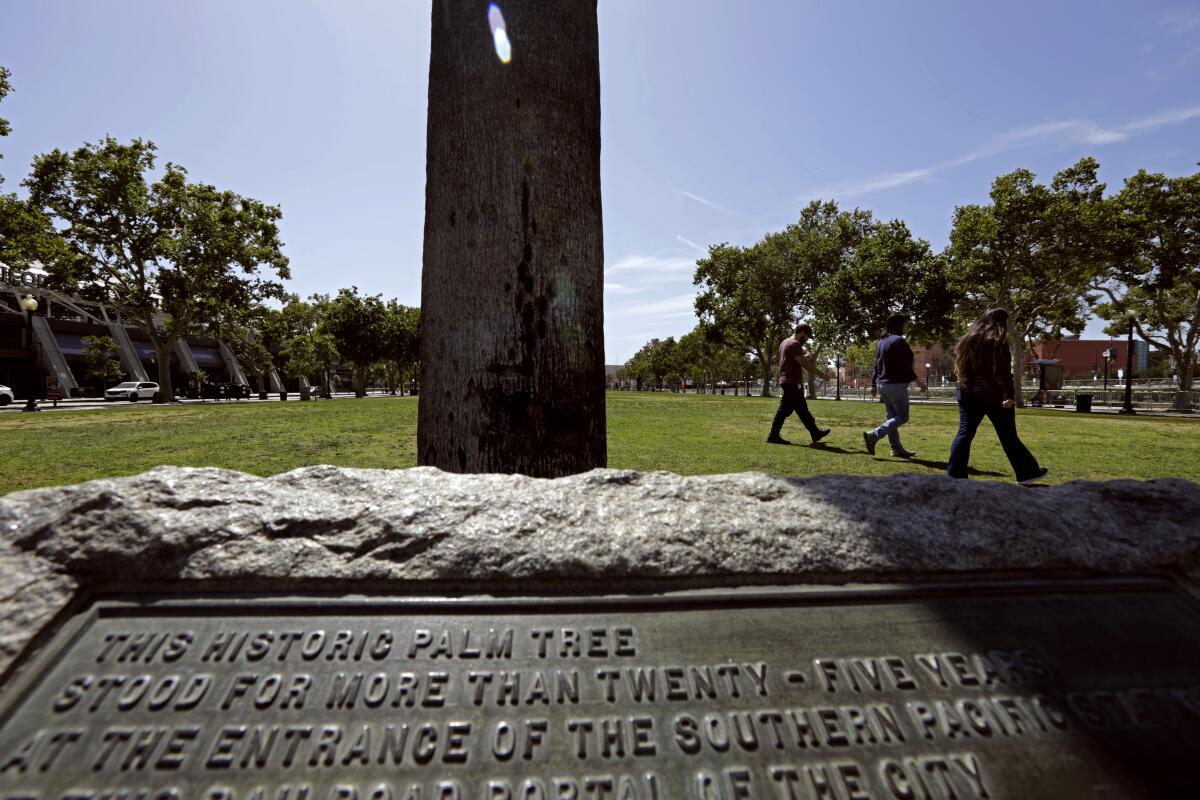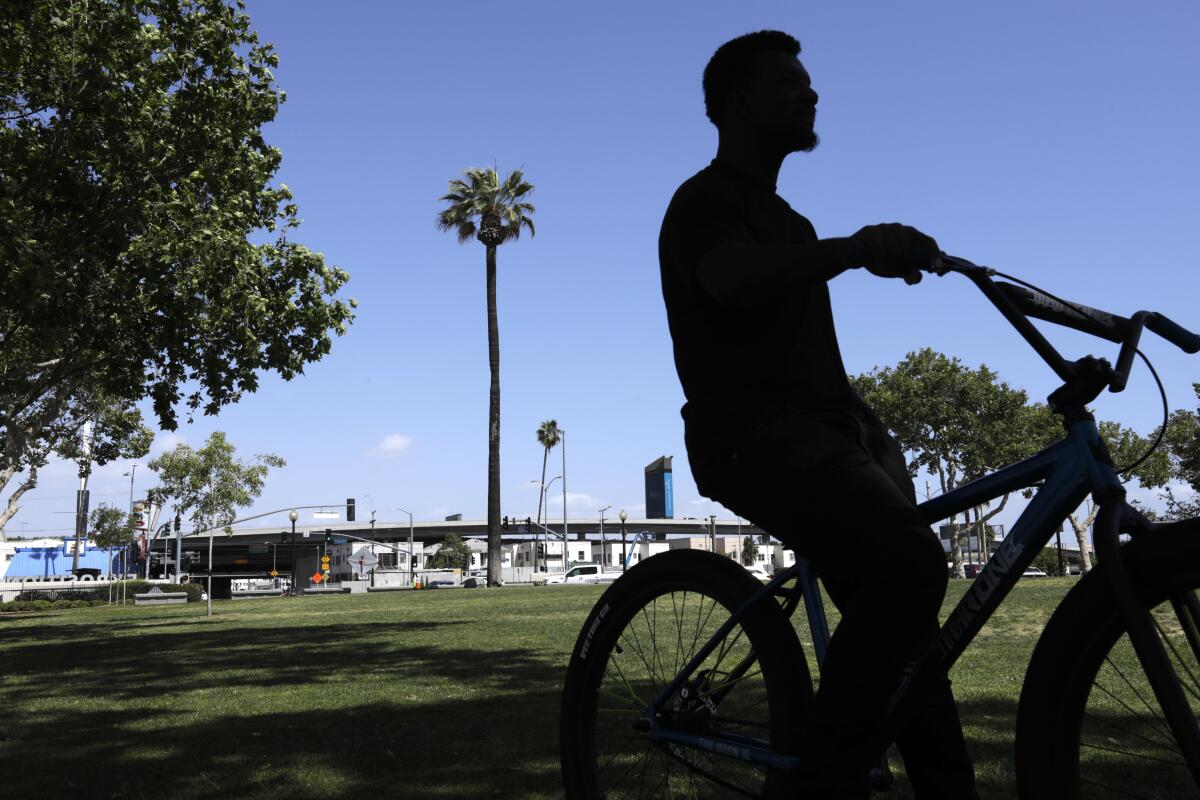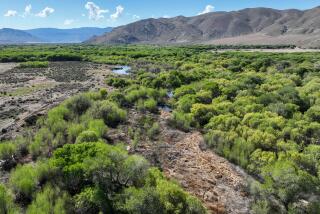Column: Heed the warnings of this palm tree, a 200-year-old drought survivor

- Share via
About 200 years ago, a palm tree was planted in downtown Los Angeles.
The fan palm was originally from the Southern California desert, a newcomer to the city like so many who would arrive later. And like so many who settled here, this young migrant prospered while adapting to the changing times.
It grew up as humble landscaping for a home on San Pedro Street in what’s now Little Tokyo, while Los Angeles transitioned from Spanish to Mexican to American rule. Its quick growth and ample top earned it fame as the dusty pueblo turned into a boomtown.

By the time the Southern Pacific Railroad relocated the fan palm near the entrance of a new station on Alameda Street and 5th Street in 1888, the tree — then estimated to be between 65 and 76 years old — was a local celebrity.
This paper called the tree “among the oldest landmarks of Los Angeles.” A year later, a Los Angeles Herald article proclaimed that it gave “the Eastern arrival as he proceeds up town a first impression of the wondrous things that are in store for him.”
The fan palm moved one more time, in 1914, to its present location at the Figueroa Street entrance to Exposition Park near where Banc of California Stadium now stands. A slightly oxidized plaque at the tree’s base calls it “a mute witness” to the megalopolis that Los Angeles became.
One of the oldest known living things in Los Angeles is silent no more. I visited the fan palm earlier this week to hear its wisdom about a subject it knows too well: drought.
Southern California is about to greet summer with some of the most drastic water restrictions ever enacted in the region. Millions of Angelenos in the Westside and the San Fernando Valley will be limited to watering plants once week starting June 1, with nearly everyone else in the city capped at twice a week. If things don’t improve, there might be an outright ban come September.
We’re being asked to cut down on showers, on washing cars, on anything water. Yet even as we’re in the midst of one of the driest spells on record, things are already getting worse. The State Water Resources Control Board recently said that water use in California cities increased by 19% this March, despite pleas by officials for the public to preserve every last drop.
A monthly look at the water shortage With the wet season two-thirds finished, the amount of snow and rain on California’s mountains continued to fall far short of normal.
It’s this reality that has Exposition Park undergoing an evaluation of its own landscaping “to fit more appropriately to our current climate and drought management strategies,” said Vanessa Esparza. She’s the interim general manager of the Office of Exposition Park Management, which maintains the historic 160-acre site.
There will undoubtedly be a serious conversation about whether to keep watering the massive lawn that stretches from the 200-year-old fan palm to the entrance of the Coliseum — a football field worth of green turf irrigated with rotary sprinklers thrice a week.
Esparza did vow that Exposition Park “will continue to preserve the historic palm tree as a reminder to the park’s notable legacy.”
But what legacy?
We have long celebrated the skinny Washingtonia filifera as an ambassador to our supposed paradise. It sure played the part well when I visited on a perfect morning. The sun was bright, the sky blue, the few clouds above white and happy. The fan palm, now about 85 feet tall, towered above everything, lining up with the iconic Coliseum cauldron. It looked shaggier than usual, because its fronds aren’t being trimmed until the birds nesting in them move out.
Here was the Southern California dream. People post pictures of the fan palm on Instagram, much like the Southern Pacific hired photographers so out-of-towners could pose before it 120 years ago. It even has a Wikipedia page and Google map location, where it goes by the boring title “Historic Palm Tree of Los Angeles.”
It’s so much more than that. It’s a survivor.
The fan palm is pockmarked with holes — some created by birds, others by humans climbing it to remove the fronds (Exposition Park now uses a cherry picker to reduce stress on the old-timer). Two nails about 6 feet above the ground are spiked into it. Ants ran up and down its trunk when I came in for a closer look.
Near the base is a big indentation that looks like a kidney. Halfway up is a huge scar that looks as if a giant took a bite out of it; Velasquez said there is no record of what caused that blemish.
Above that, the trunk tapers for a section before fattening again. Was it speaking to me about droughts past? “Skinny near the middle can definitely be a sign of water stress from many years ago,” Velasquez said.

This fan palm has seen how the lack of water transforms a place. It survived the drought of 1864, which destroyed the cattle industry in Southern California, reduced the Californios to ruins and ushered in the beginnings of the modern city.
It looked on as L.A.’s captains of industry created the aqueduct that stole water from the Owens Valley to slake the thirst of a growing region that didn’t have enough local water to be self-sustaining. It weathered the dry years of the 1930s and 1950s that spurred California’s creation of the Central Valley and State Water projects, once-gushing man-made miracles reduced this year to virtual trickles.
Exposition Park’s unassuming time capsule made it through the bad years of 1976 and 1977, a drought that prompted state officials to warn in a 238-page report that any subsequent wet periods in the future couldn’t “lull us into a false sense of security.” And it’s still alive and healthy today, an era that scientists say is the worst Western drought in 1,200 years.
Heed my life well, the fan palm warned me, as the joggers who passed by paid little attention. The sprinklers that were on while I was there never quite hit the tree. Instead, the spray went over the concrete barriers that protect the fan palm from oncoming traffic and landed on asphalt.
A shallow puddle formed, then evaporated with the day.
More to Read
Sign up for Essential California
The most important California stories and recommendations in your inbox every morning.
You may occasionally receive promotional content from the Los Angeles Times.











